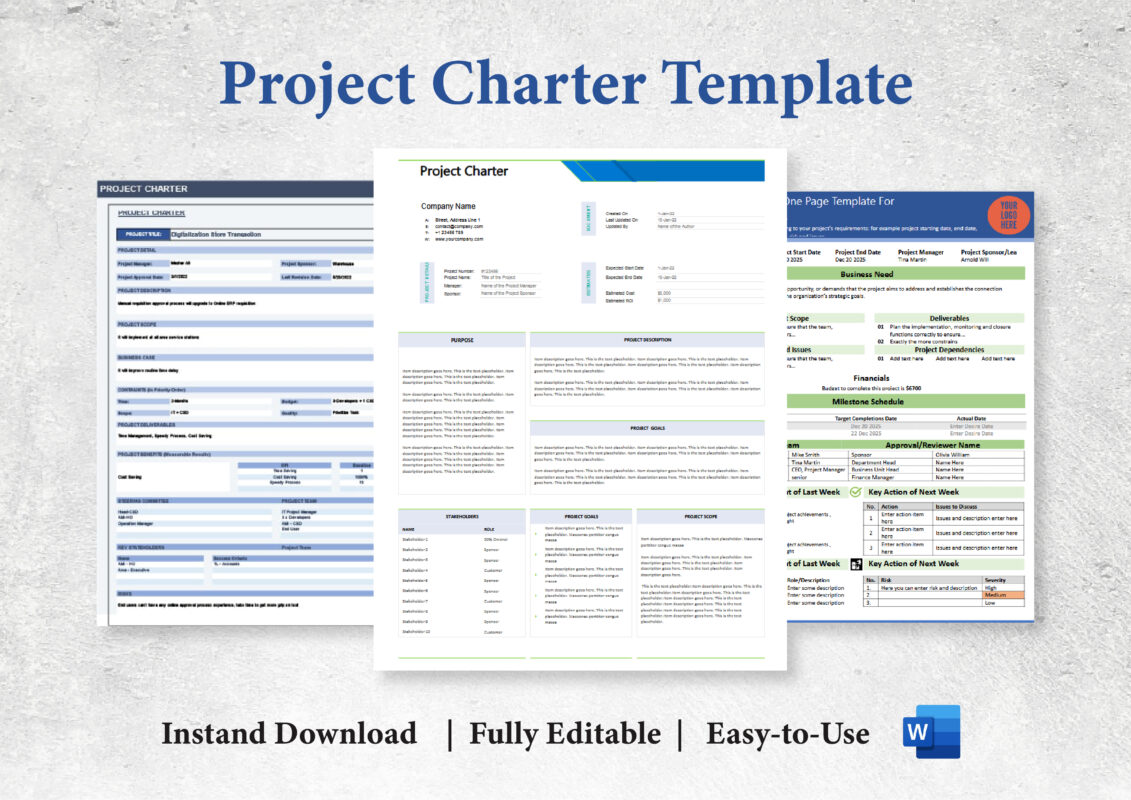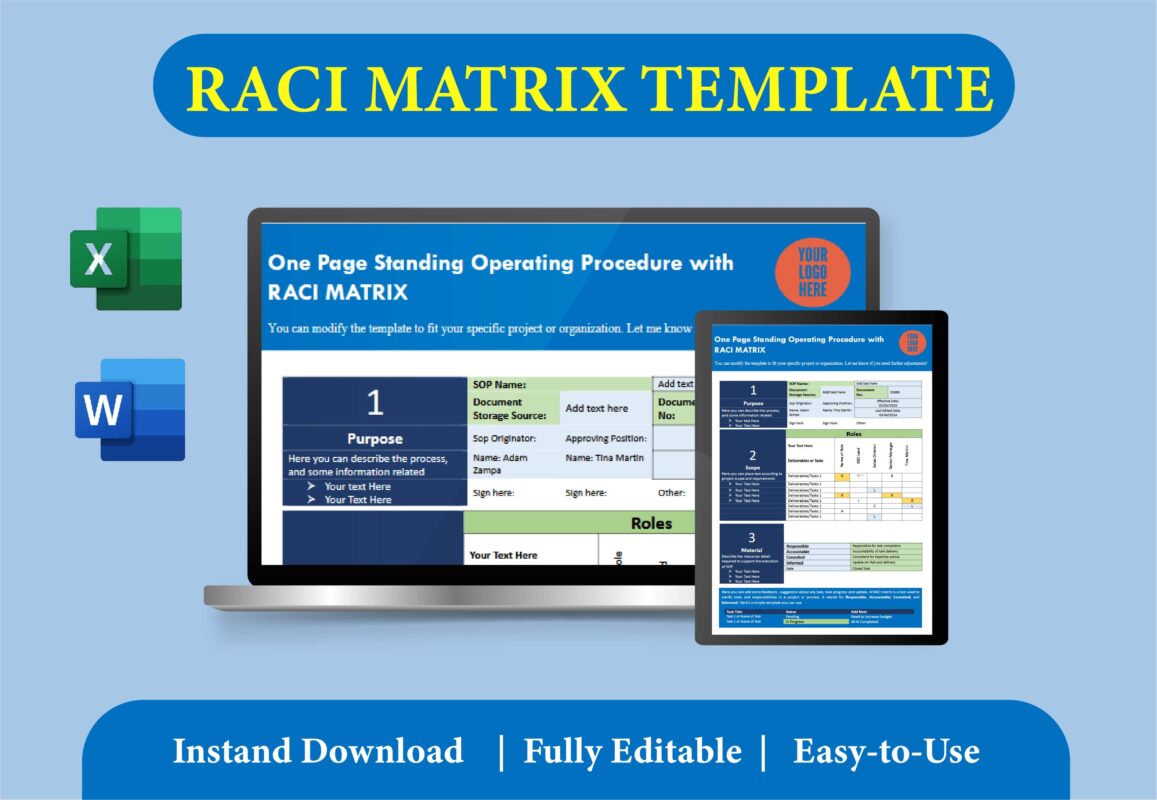A Project Plan Template serves as a critical document in project management. It outlines the strategy for achieving project objectives, managing resources, and ensuring timely delivery.
Importance:
This template provides a structured framework for project execution. It helps project managers align stakeholders, allocate resources effectively, and track progress. The template ensures clarity on project goals and fosters communication among team members.

Using a project plan template enhances efficiency and minimizes errors. A well-defined plan reduces ambiguity, allowing teams to focus on deliverables. The template serves as a reference point, guiding decision-making throughout the project lifecycle.
Related Article: Stakeholder Management Plan Template
Key Components:
Understanding the essential components of this template is vital for effective project management. Here are the key elements:
1. Project Scope
The project scope defines the boundaries of the project. It outlines what is included and excluded in the project. A clear scope statement prevents scope creep and keeps the project focused.
2. Objectives and Goals
Objectives and goals provide direction for the project. They should be specific, measurable, achievable, relevant, and time-bound (SMART). These elements help the team understand the project’s purpose and desired outcomes.
3. Timeline
A timeline outlines the project schedule, including milestones and deadlines. It breaks down tasks into manageable segments and assigns timelines for completion. A visual representation, such as a Gantt chart, can enhance clarity.
4. Resource Allocation
Resource allocation involves identifying and assigning resources required for project completion. This includes personnel, budget, equipment, and materials. Effective resource management ensures the project remains within budget and on schedule.
Related Article: Resource Allocation Plan Template Excel
5. Risk Management
A risk management plan identifies potential risks and outlines strategies to mitigate them. This section helps the team prepare for uncertainties and minimizes the impact of unforeseen events.
6. Communication Plan
A communication plan outlines how project information will be shared among stakeholders. It specifies communication methods, frequency, and responsible parties. This component ensures everyone remains informed and engaged.
Related Article: Change Management Communication Plan Template
7. Performance Metrics
Performance metrics evaluate project success. They help measure progress against objectives and identify areas for improvement. Common metrics include key performance indicators (KPIs), budget adherence, and timeline accuracy.
Defining the Benefits:
Using this template offers several advantages that enhance project management effectiveness.
1. Standardization
This template standardizes project documentation. This uniformity simplifies the project management process, making it easier for teams to understand and follow established procedures.
2. Time Savings
Templates save time by providing a pre-defined structure. Project managers can quickly fill in relevant information rather than starting from scratch. This efficiency accelerates project initiation.
3. Enhanced Collaboration
This template fosters collaboration among team members. It provides a shared reference point, ensuring everyone understands their roles and responsibilities. This alignment promotes teamwork and accountability.
4. Improved Visibility
The template enhances visibility into project progress. Stakeholders can easily track milestones, deadlines, and resource utilization. This transparency builds trust among team members and stakeholders.
5. Effective Risk Management
Templates support proactive risk management. By outlining potential risks and mitigation strategies, teams can address issues before they escalate. This foresight contributes to project success.
Related Article: PMP Project Management Template
Steps to Create a Project Plan Template:
Creating this template involves several systematic steps. Following these steps ensures a comprehensive and effective template.
1. Define Project Objectives
Start by defining the project objectives. Clearly articulate what the project aims to achieve. Involve stakeholders to gather input and ensure alignment on goals.
2. Identify Key Stakeholders
Identify all stakeholders involved in the project. Understand their roles, interests, and expectations. Engaging stakeholders early promotes buy-in and fosters a collaborative environment.
3. Outline Project Scope
Develop a detailed project scope statement. Clearly define what the project will deliver and what is excluded. This statement acts as a foundation for project planning and execution.
4. Develop a Timeline
Create a timeline that outlines the project schedule. Break down tasks into smaller components and assign deadlines. Utilize project management tools to visualize the timeline effectively.
5. Allocate Resources
Assess resource requirements and allocate them accordingly. Identify team members, budget, and materials needed for each task. Ensure that resources align with project objectives and timelines.
6. Establish a Communication Plan
Develop a communication plan that outlines how information will be shared. Specify communication channels, frequency, and responsible parties. This plan ensures consistent information flow throughout the project.
7. Create a Risk Management Plan
Identify potential risks and develop strategies to mitigate them. Document these risks within the project plan template. Regularly review and update the risk management plan as the project progresses.
8. Define Performance Metrics
Establish performance metrics to evaluate project success. Determine how progress will be measured and reported. Use KPIs to assess project performance against objectives.
Related Article: Project Portfolio Management Template

Defining the Challenges:
While project plan templates offer many benefits, they also present challenges that project managers should address.
1. Template Rigidity
Some templates may be too rigid, limiting flexibility in project management. It is essential to customize the template according to specific project needs. A one-size-fits-all approach can hinder project success.
2. Overlooking Details
In the rush to complete this template, project managers may overlook critical details. It is crucial to ensure all components are thoroughly addressed. Incomplete templates can lead to misunderstandings and miscommunications.
3. Resistance to Change
Teams may resist adopting a new project plan template. Change management strategies can help address resistance and encourage team members to embrace the new template. Providing training and support fosters acceptance.
4. Maintaining Template Relevance
As projects evolve, project plan templates should remain relevant. Regular reviews and updates to the template ensure it meets changing project requirements. Neglecting this can render the template ineffective.
5. Training and Familiarization
Not all team members may be familiar with this template. Providing training on how to use the template effectively ensures that all team members can contribute to the planning process. This training enhances collaboration and improves outcomes.
Related Article: project plan
Conclusion:
This template serves as a vital tool in project management. It provides structure, clarity, and guidance throughout the project lifecycle. By understanding its key components, benefits, creation steps, and challenges, project managers can leverage this template effectively. This tool not only enhances project efficiency but also contributes to successful project outcomes. By following this guide, teams can ensure that their project planning process aligns with best practices, setting the stage for project success in 2024 and beyond.






